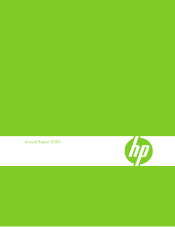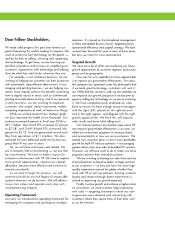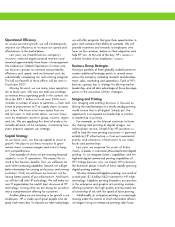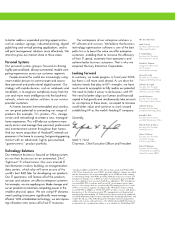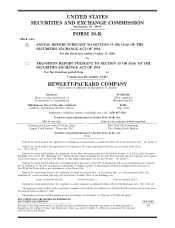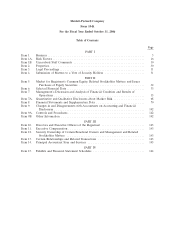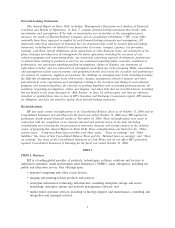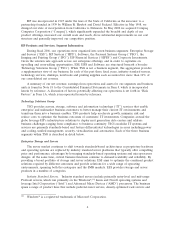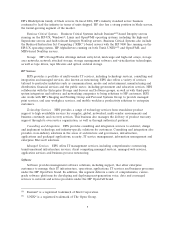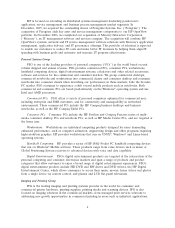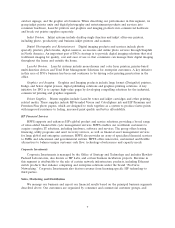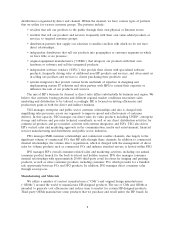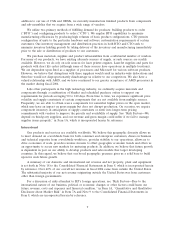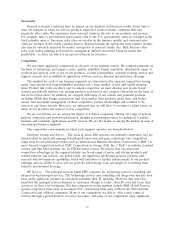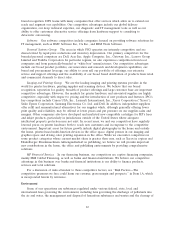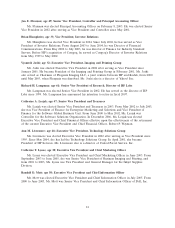HP 2006 Annual Report Download - page 8
Download and view the complete annual report
Please find page 8 of the 2006 HP annual report below. You can navigate through the pages in the report by either clicking on the pages listed below, or by using the keyword search tool below to find specific information within the annual report.
HP was incorporated in 1947 under the laws of the State of California as the successor to a
partnership founded in 1939 by William R. Hewlett and David Packard. Effective in May 1998, we
changed our state of incorporation from California to Delaware. In May 2002 we acquired Compaq
Computer Corporation (‘‘Compaq’’), which significantly expanded the breadth and depth of our
product offerings, increased our overall scale and reach, drove substantial improvements in our cost
structure and generally improved our competitive position.
HP Products and Services; Segment Information
During fiscal 2006, our operations were organized into seven business segments: Enterprise Storage
and Servers (‘‘ESS’’), HP Services (‘‘HPS’’), Software, the Personal Systems Group (‘‘PSG’’), the
Imaging and Printing Group (‘‘IPG’’), HP Financial Services (‘‘HPFS’’) and Corporate Investments.
Given the solution sale approach across our enterprise offerings, and in order to capitalize on
up-selling and cross-selling opportunities, ESS, HPS and Software are structured beneath a broader
Technology Solutions Group (‘‘TSG’’). While TSG is not a business segment, this aggregation provides
a supplementary view of our business. In each of the past three fiscal years, industry standard servers,
technology services, desktops, notebooks and printing supplies each accounted for more than 10% of
our consolidated net revenue.
A summary of our net revenue, earnings from operations and assets for our segments and business
units is found in Note 18 to the Consolidated Financial Statements in Item 8, which is incorporated
herein by reference. A discussion of factors potentially affecting our operations is set forth in ‘‘Risk
Factors’’ in Item 1A, which is incorporated herein by reference.
Technology Solutions Group
TSG provides servers, storage, software and information technology (‘‘IT’’) services that enable
enterprise and midmarket business customers to better manage their current IT environments and
transform them into a business enabler. TSG products help accelerate growth, minimize risk and
reduce costs to optimize the business outcomes of customers’ IT investments. Companies around the
globe leverage HP’s infrastructure solutions to deploy next generation data centers and address
business challenges ranging from compliance to business continuity. TSG’s modular IT systems and
services are primarily standards-based and feature differentiated technologies in areas including power
and cooling, unified management, security, virtualization and automation. Each of the three business
segments within TSG is described in detail below.
Enterprise Storage and Servers
The server market continues to shift towards standards-based architectures as proprietary hardware
and operating systems are replaced by industry standard server platforms that typically offer compelling
price and performance advantages by leveraging standards-based operating systems and microprocessor
designs. At the same time, critical business functions continue to demand scalability and reliability. By
providing a broad portfolio of storage and server solutions, ESS aims to optimize the combined product
solutions required by different customers and provide solutions for a wide range of operating
environments, spanning both the enterprise and the SMB markets. ESS provides storage and server
products in a number of categories.
Industry Standard Servers. Industry standard servers include primarily entry-level and mid-range
ProLiant servers, which run primarily on the Windows,(1) Linux and Novell operating systems and
leverage Intel Corporation (‘‘Intel’’) and Advanced Micro Devices (‘‘AMD’’) processors. The business
spans a range of product lines that include pedestal-tower servers, density-optimized rack servers and
(1) Windows is a registered trademark of Microsoft Corporation.
4

